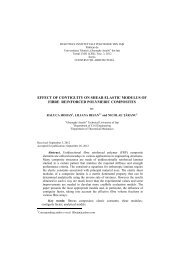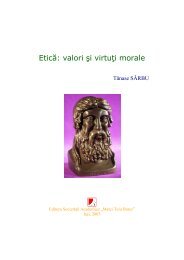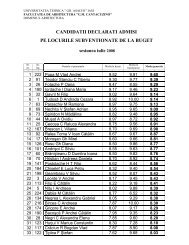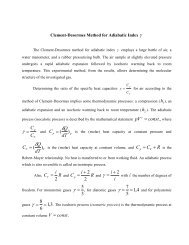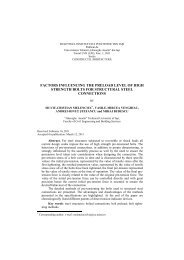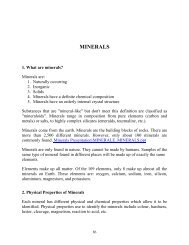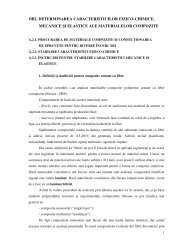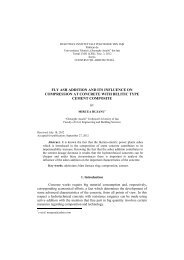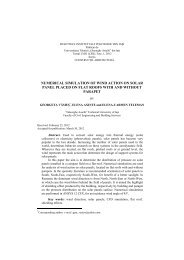STRENGTHENING OF STONE MASONRY ARCH BRIDGES THREE ...
STRENGTHENING OF STONE MASONRY ARCH BRIDGES THREE ...
STRENGTHENING OF STONE MASONRY ARCH BRIDGES THREE ...
Create successful ePaper yourself
Turn your PDF publications into a flip-book with our unique Google optimized e-Paper software.
Masonry Arch Bridge Construction<br />
The wedge shaped blocks from which an arch is built are known as voussoirs. They are<br />
usually symmetrically disposed about a central voussoir known as the key-stone from a<br />
mistaken idea on the pat of early builders that it had a special function to perform. It is<br />
in fact an aesthetic and traditional feature rather than a structural requirement. The<br />
blocks in the abutments upon which the end of the voussoirs rest are known as skewbacks<br />
and the surface between an end voussoir and a skew-back is the springing. The<br />
highest point of the arch is the crown and the lower sections are the haunches. This is a<br />
general term and there is no hard and fast definition of how much of the structure is<br />
included in a haunch. The upper boundary line of the arch ring is the extrados and the<br />
lower line is the intrados. The under surface of the arch ring is the soffit. The outer<br />
walls which retain the fill are the spandrel walls and they become the wing-walls at<br />
either side of the arch.<br />
2.2. Foundations<br />
The foundations of masonry arch bridges are usually relatively shallow spread footings.<br />
Excavation would be taken down to firm material but if necessary timber piles would be<br />
used (they have been in use since Roman times). In water cofferdams would be used to<br />
provide a dry working area. A grating of large timbers may then have been laid on the<br />
river bed or on the heads of the piles as a base for the masonry of the pier or abutment.<br />
Alternatively the Romans used concrete.<br />
Fig. 2.4 – Foundation cofferdam<br />
The foundations may be threatened by earthquake or flood, for example.<br />
In fact, even the normal flow of river water past bridge piers can generate scouring<br />
which can bring down a bridge. The presence of the piers changes the flow, producing<br />
acceleration and turbulence. The lifting and carrying power of a fluid increases as a high<br />
Leonardo da Vinci Program 17



